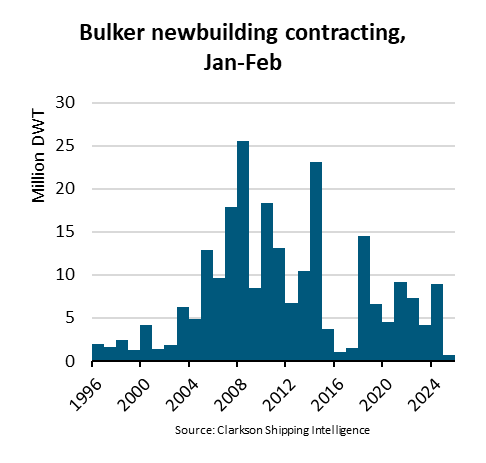In many ways, fleet management has never been more difficult. Booming inflation and gas prices continue to eat away at the bottom line of companies that are fleet reliant. With so many economic pressures on fleet-heavy industries, the time has never been better to reduce operational costs in fleet management.
Reducing fleet operational costs requires a multi-pronged approach. The use of real-time data analytics and notification such as route optimization, fuel usage, predictive maintenance tracking, idle time reports, driver congregation notifications, geofencing for optimized productivity as well as a comprehensive safety driver scorecard combine to ensure your drivers and operators are delivering on your brand promise. Real-time reports and notifications also ensure your fleet is efficient, safer and more productive leading to saved time and money.
If you are a fleet manager looking for ways to trim your costs, while improving the customer experience or simply looking for ways to utilize the vehicles in your fleet better, then consider these 5 ways to cut operating costs in your fleet management.
1. FLEET ROUTING
Optimizing the routing of fleet vehicles to maximize efficiency is a complicated task even for the smallest fleets. When you rely on individual employees to plan routes, it could take hours – or longer – to configure a route schedule.
Utilizing a route planner application can cut planning time down to minutes, not hours. This is particularly the case for fleets that experience changes to routes throughout the day or week. A planner application can re-optimize immediately, on the go, keeping your fleet efficient by ensuring you’re taking the quickest path, reducing waste regardless of how many route changes occur.
Beyond simply optimizing route efficiency, a route planner will make your fleet more nimble and responsive, improving customer service. Improved customer service means fewer delays, complaints or fines. Have you considered sending a customer notification via route planning?
2. MAINTENANCE
Reducing costs for your fleet begins and ends with a preventative maintenance (PM) plan. Too often fleets will wait until something breaks down to fix it as they need to make the run. Optimizing and tracking your PM Currency ratio(s) are a very important metric to ensuring maximum uptime.
Using a PM plan to ensure problems with your fleet are caught before they balloon into something big can save many thousands of dollars over the year. A PM plan can be as simple as doing pre- and post-safety and mechanical checks to establish annual maintenance goals for your entire fleet. Many software programs track vehicle maintenance scheduling, however it can be imperative to microtarget components that may update from year to year or form model to model, especially with all of the recent emission changes to engines.
Putting your
PM plan from paper into software ensures that everyone involved in the fleet, from drivers to management, has the same set of procedures for preventing mechanical issues through the streamlining of safety checklists, service records, inspection reports and more.
3. FUEL TRACKING
The recent surge in fuel prices seems more permanent than ever, which is all the more reason to implement fuel tracking systems into your fleet. Using applications to track fuel consumption in your fleet can inform fleet managers about what sort of changes need to be implemented.
Aggressive driving and idling time are two of the most common culprits when it comes to excessive fuel use in a fleet. Fleet telematics can monitor when a car is on, but not moving for long periods. As
idling can use up to a gallon of fuel per hour, cost savings over time could result in hundreds or even thousands of dollars a year. It may also be important to select a telematic provider that can allow for customization of idle time settings, for instance in a car, idle time maybe 3 min, however a heavy commercial vehicle maybe 5min for the idle time rule.
As well, tracking applications can also note the speed and movement of fleet vehicles, allowing you to better understand and curb unnecessary driver habits. A mid-sized vehicle that
drives efficiently can save anywhere between $500 to $1500 a year when averaging 15,000 miles a year; now multiply that by your vehicle count
4. FLEET SAFETY
Insurance companies value safety, and safe drivers, so it is in the best interest of fleet managers to ensure drivers are driving safely all the time. According to Driver’s Alert, the
average cost of a non-fatal accident was around $16,000. Failure to eliminate these costs could be crippling to a fleet.
Instituting
driver safety programs into a fleet can reduce the incidence of collision by nearly 10%. Over a given year for a standard fleet, these cost savings would be in the thousands of dollars.
Combining a safety program with the use of driver tracking applications would further reduce the incidence of accidents, which would in turn reduce insurance premiums, maintenance costs, and fuel consumption.
5. FLEET PRODUCTIVITY
Fleet productivity is all about making your drivers and fleet managers more productive. The use of fleet telematics is critical to improving efficiencies within your fleet. These applications will track fuel consumption, streamline and improve routing, and safety.
The use of reports provided by telematics applications such as Geotab can ensure your fleet operators are working at peak productivity. While no employee is capable of 100% efficiency all the time, reports can tell you where fixed and variable costs of your fleet can be trimmed.
Custom reports can also provide reports for fleet drivers and maintenance staff. This encourages a ground-up approach to productivity that allows all staff to engage in fleet efficiency, reducing the responsibility of fleet managers to micromanage drivers and other fleet staff.
Telematics are your first choice when reducing your fleet management operational costs. Utilizing this one change can effectively allow you to better manage your fleet’s fuel efficiency, safety, maintenance and overall productivity.
Source:
Connected Vehicles
The opinions expressed herein are the author's and not necessarily those of The Xinde Marine News.
Please Contact Us at:
media@xindemarine.com


 Ningbo Containerized Freight Index Weekly Commentar
Ningbo Containerized Freight Index Weekly Commentar  Ningbo Containerized Freight Index Weekly Commentar
Ningbo Containerized Freight Index Weekly Commentar  Ningbo Containerized Freight Index Weekly Commentar
Ningbo Containerized Freight Index Weekly Commentar  BIMCO Shipping Number of the Week: Bulker newbuildi
BIMCO Shipping Number of the Week: Bulker newbuildi  Ningbo Containerized Freight Index Weekly Commentar
Ningbo Containerized Freight Index Weekly Commentar  Ningbo Containerized Freight Index Weekly Commentar
Ningbo Containerized Freight Index Weekly Commentar